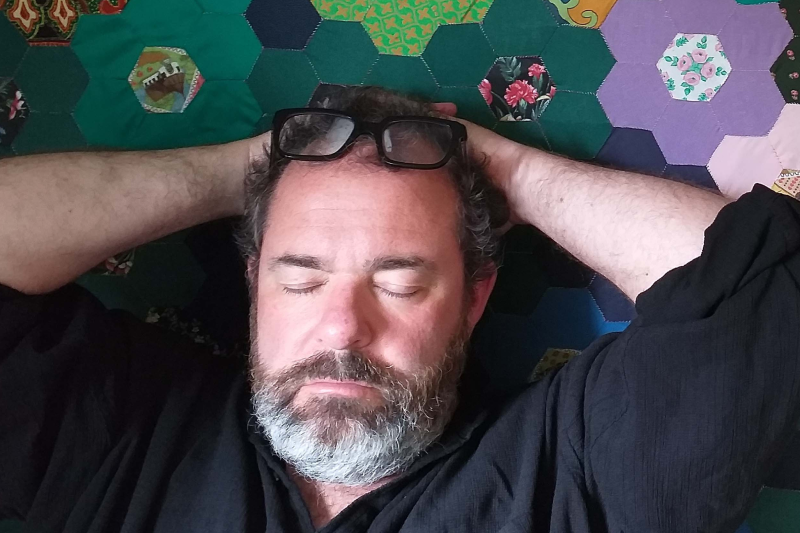Johan Jönson

Johan Jönson
Rationale:
In Nollamorfa, Johan Jönson’s latest and twenty-first poetry collection, we meet a man who retired from his job as a janitor a few years ago. He now suffers from Parkinson’s-related dementia, and we’re with him during his final days in a nursing home. His confused memories, thoughts, and impressions wander down the middle of the pages of the book in short lines, often fragmented into single sounds and syllables. On the right-hand side of the book is a text in italics where the man’s carers and relatives try awkwardly to reach him. This back-and-forth lasts until the end, his death – the countdown to zero in Jönson’s authorship, referring back to his idea that “poetry is zero”.
Jönson echoes the language and disintegrating memories of dementia and, like a death drive, heads compulsively deeper into many of his frequently occurring themes, such as his own alienation from language. But he also portrays dementia as analogous to the manual labour class and its lack of language to speak for itself. In the withering language of the father-in-law, there are also poetic truths and qualities to take advantage of:
Vad heter barnen / Mina / Vilka är mina // Har j / Har jag de barnen // Är det j / Jag s / Va // Är dd // Ä // Vv // Va // Ahh // Vem / Vilka var dem // Vilk.
In Jönson’s polyphonic poetry, nothing is too fine or too ugly to put into a poem. There is a trickle of gender expressions combined with beautiful depictions of landscapes and childhood and demanding theories and furious attacks against contemporary hyper-individualism and capitalism.
In the midst of these serious and difficult depictions of the present, humour shines through, such as in the play on the Swedish word “gravad”, which can mean both “buried” and “marinated” in reference to smoked salmon. We find this wordplay on the inscription on the man’s headstone, which, according to his own wishes, reads as follows:
NÄR HAN LEVDE VAR HAN EN LIVAD LAX
MEN NU ÄR HAN EN GRAVAD
In Nollamorfa, Jönson works faithfully with what has come to characterise his poetry, a form of montage, an artistic technique and form of composition where elements are juxtaposed and meaning is created in the connections between them. The way the montage technique transitions between text characters, style levels, typographies, and rhythms helps to make the form dynamic and fluid, allowing the eye to jump between different statements and forms. Hence, the reader also has the opportunity to be a co-creator.
The A3 format gives the book space. This is an interesting choice now that digital books are increasingly trying to outcompete physical books. Furthermore, the book assumes its position while the author ends up in obscurity, which also challenges the contemporary obsession with the author and the author’s voice.
Johan Jönson (born in 1966) had his breakthrough in 2008 with the poetry collection Efter arbetsschema, which was followed by the August Prize-nominated Livdikt (2010), then three volumes of directions: med.bort.in. (2012), mot.vidare.mot. (2014), and dit.dit.hään. (2015). He was first nominated for the Nordic Council Literature Prize for Efter arbetsschema in 2009, and then again in 2019 for Marginalia/Xterminalia. With Nollamorfa, he shows once again that his pen is one of Sweden’s sharpest.